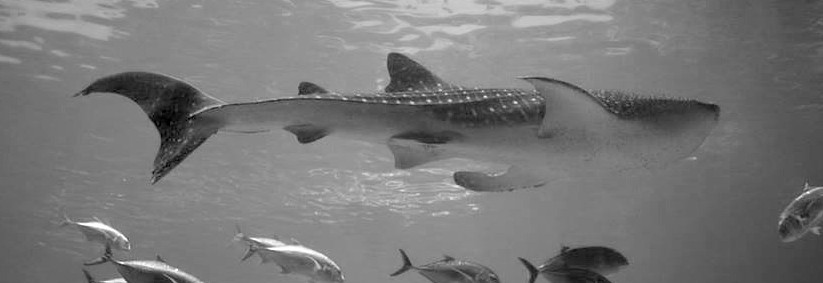

Photo Credit / Rebecca Carroll
By Briana Magistro
SC Staff Writer
The word “shark” makes most people think of a scary, quick, sharp-toothed creature that attacks fishing boats and can only be stopped by exploding air tanks. This perception of sharks is not true.
Yes, some sharks are large and have hundreds of sharp teeth for eating large prey, like the Great White. Some swim very fast, like the Mako, the fastest fish in the sea. Neither of these are Spielberg’s fish robot, “Jaws.”
The whale shark is about as far from this perception as possible.
It is the largest fish in the world, growing over 40 feet long. It may weigh over 20 tons, but it does not behave anything like Jaws.
Despite their size, whale sharks eat small prey. These sharks feed on plankton, krill, and small invertebrates, like squid.
Similar to baleen whales, this shark is a filter feeder. This means that they take in huge amounts of water in their wide mouths and filter out their prey items to consume.
Their gills are also specialized to filter out any food items that may get caught when water enters the organ. Only two other shark species, the mega mouth shark and the basking shark, feed in this way.
Many people ask if whale sharks attack or swallow humans. According to a marine naturalist at the Georgia Aquarium in Atlanta, whale sharks’ throats are only as wide as a quarter!
Although whale sharks do not feed on anything larger than a half-dollar, divers and snorkelers are advised to stay away from whale sharks.
If they are feeding, they suck in a large amount of water at once, and a diver could get caught in the current. Similarly, whale sharks create a sharp current with their tails when swimming.
The whale shark moves very slowly, and can even completely stop.
This is very uncommon for fish, as they require water to move over their gills when they respire. Whale sharks’ gills have extra organs that help to pump water when they are moving slowly or they are stopped.
Although they are slow, they do not have many natural enemies. According the Georgia Aquarium staff, only orcas and large carnivorous whale species will prey on them.
The coloring of whale sharks offers them some camouflage. They have white bellies and gray backs that are speckled with white or other light colors. This makes them hard to see from above or below.
Whale sharks can sometimes be caught in fishing nets while feeding near the surface. They are hunted in some parts of Asia, but are now a protected species. Oil spills and pollution have also affected feeding habits in effected waters.
Whale sharks are rare in captivity. In fact, the Georgia Aquarium in Atlanta is the only place in the western hemisphere where these extraordinary animals can be seen in captivity.
The aquarium houses four young sharks. Their tank was made to hold four adult sharks, so Trixie, Alice, Taroko, and Yushan will remain in this tank throughout adulthood.
Other aquariums that hold whale sharks are found in eastern Asia, but overall there are very few in captivity.
If you would like to see these gentle giants, consider visiting Atlanta, Georgia. The whale shark is the furthest thing from the infamous Jaws, and will hopefully help to settle fears about sharks.
Email Briana at:
bmagistro@live.esu.edu
